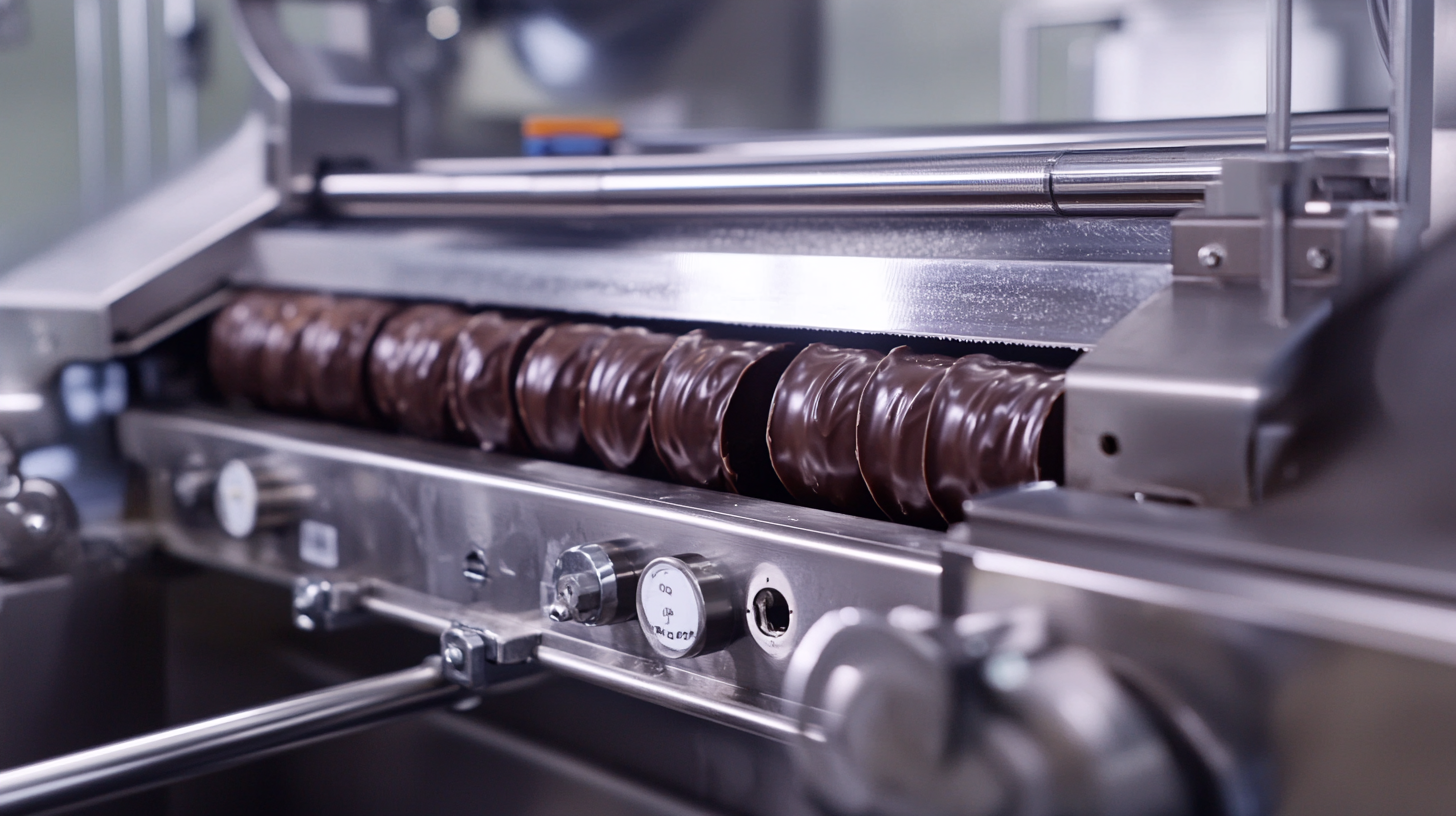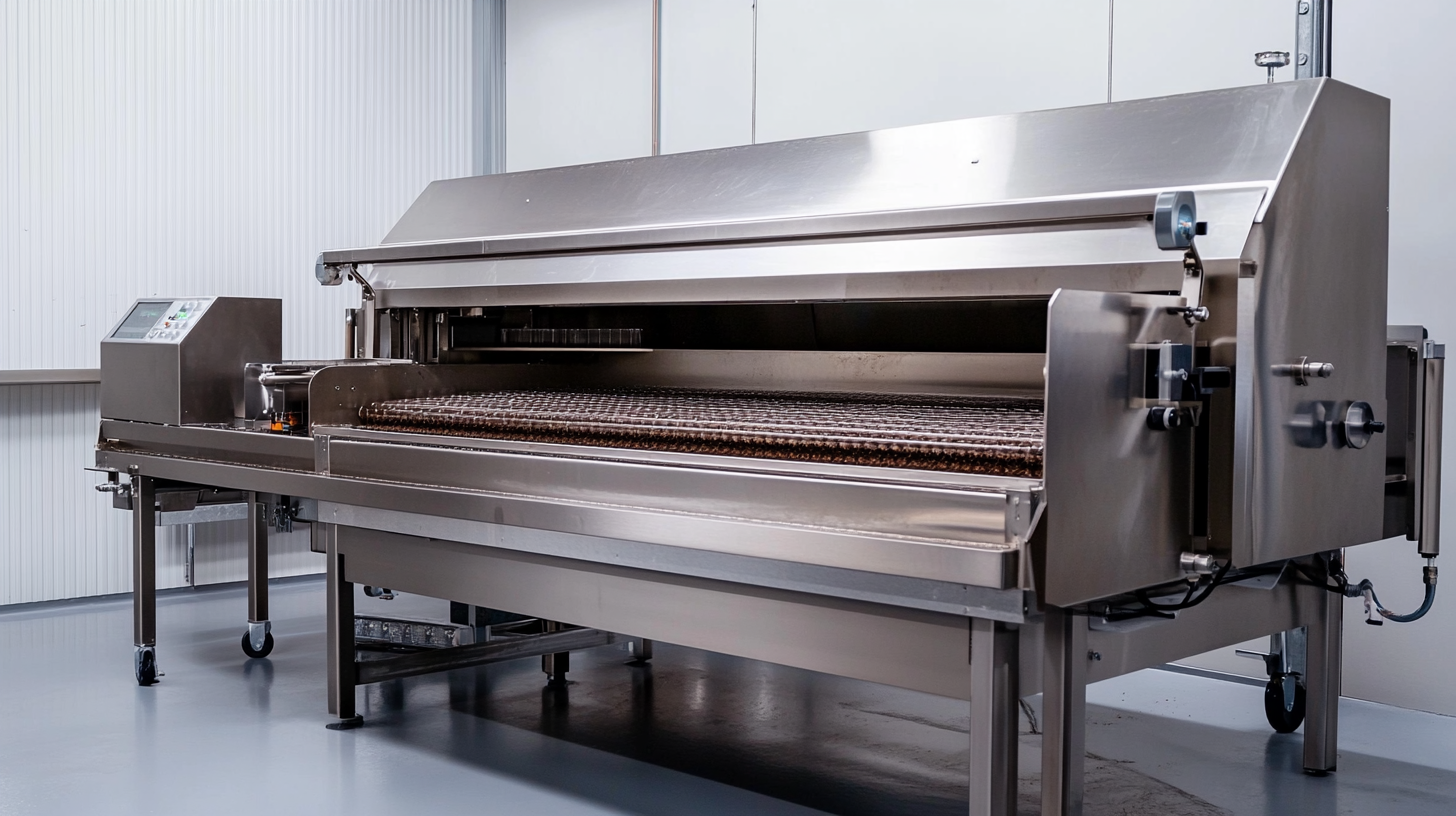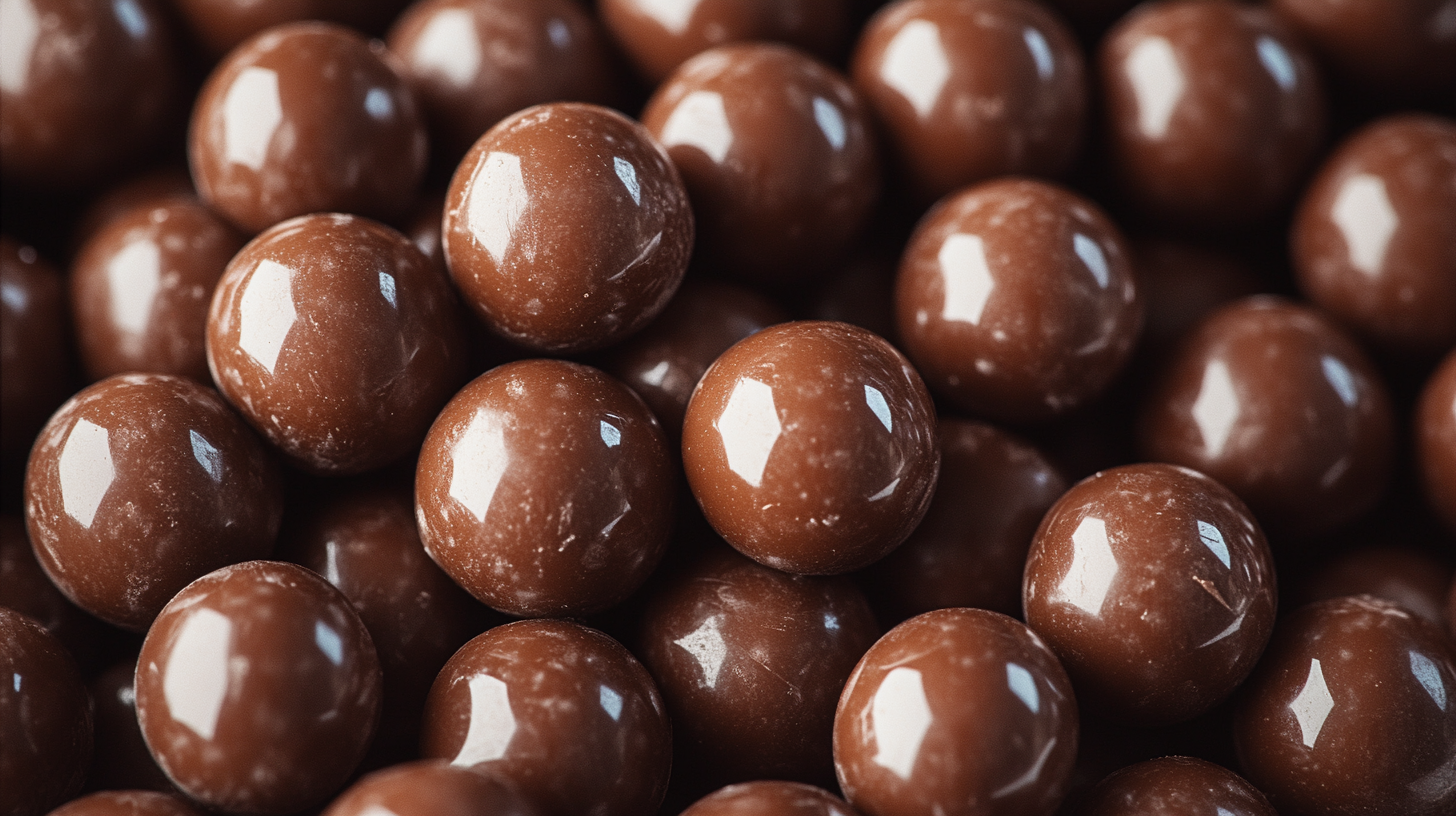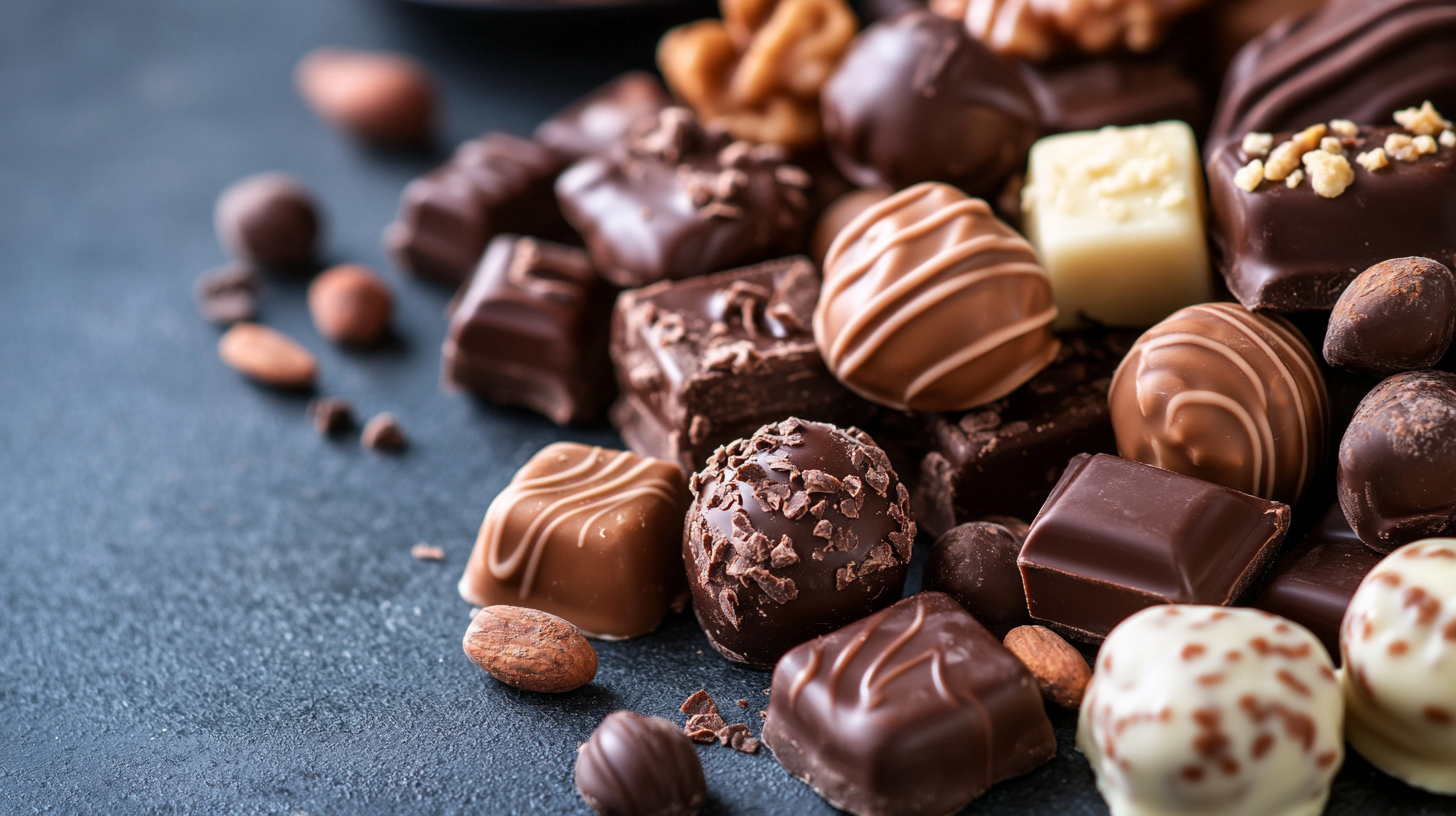7 Essential Features to Look for in a Chocolate Coating Machine
The chocolate coating market is experiencing significant growth, driven by the rising demand for coated confectionery products. According to a report by Research And Markets, the global chocolate coating market is projected to reach USD 38.5 billion by 2027, with a CAGR of over 4.2% from 2020 to 2027. In this evolving landscape, the chocolate coating machine has become a vital piece of equipment for manufacturers aiming to meet consumer preferences for high-quality, visually appealing, and delicious chocolate-covered treats.
Selecting the right chocolate coating machine is essential for achieving efficiency, consistency, and quality in production. With various models and technologies available, manufacturers must consider multiple features that contribute to optimal performance and resource utilization. As the market expands and competition intensifies, understanding the intricacies of chocolate coating machines will empower businesses to enhance their production processes and deliver superior products that satisfy today's discerning consumers.

Key Specifications for Chocolate Coating Machines to Consider
When selecting a chocolate coating machine, understanding its key specifications is vital for optimizing production efficiency and product quality. One of the most critical factors to consider is the throughput capacity, which typically ranges from 200 kg/h for small operations to over 1000 kg/h for larger manufacturers. According to the *2022 Global Chocolate Processing Equipment Market Report*, the growing demand for confectionery products has driven manufacturers to invest in high-capacity machines that can meet evolving production needs without compromising on the quality of the end product. Another essential specification of chocolate coating machines is temperature control. The ideal coating temperature must be maintained within a specific range—generally between 30°C to 34°C—to ensure a smooth and consistent finish. Research from the *European Institute of Food Technology* indicates that precise temperature regulation can reduce chocolate waste by up to 15%, thus improving overall production yield and lowering operational costs. It’s also important to evaluate the machine's versatility. Modern machines are now designed to handle various types of coatings, including dark, milk, and white chocolate, as well as variations enriched with flavors and inclusions. This adaptability is reflected in market trends, with the *Food Processing Equipment Market Outlook* forecasting a 6.5% CAGR over the next five years in the chocolate segment, emphasizing the need for equipment that can swiftly adjust to different product lines and customer preferences. Finally, ease of cleaning and maintenance should not be overlooked. Machines that comply with hygiene standards and offer easy disassembly for cleaning can greatly reduce downtime and the risk of contamination. The *Food and Drug Administration (FDA)* stresses that equipment cleanliness is crucial in food processing; therefore, investing in machines designed with maintenance in mind improves not only efficiency but also public health compliance.

The Importance of Temperature Control in Chocolate Coating
When it comes to chocolate coating machines, one crucial feature to prioritize is temperature control. The precision of temperature management is paramount in ensuring that chocolate melts and coats products uniformly, which directly impacts the product's appearance and taste. An intriguing aspect highlighted in recent studies is the role of particle size distribution of chocolate during refining. By employing advanced tools such as capacitance thermal analyzers (CTA), we can gain insights into how the melting properties of chocolate can be optimized, leading to better quality coatings.
Temperature control isn't only about maintaining a constant heat; it also involves understanding the chemical changes that occur in chocolate. For instance, during the tempering process, achieving the right temperature is essential to stabilize the cocoa butter crystals. This stability aids in producing a shiny finish and a satisfying snap, while also preventing issues like blooming. Inconsistent temperatures can lead to undesirable textures and flavors, underscoring the need for technology that can consistently monitor and adjust conditions throughout the chocolate processing stages.
Moreover, it's worth noting that the implications of temperature control extend beyond just the final product. Proper thermal management also plays a significant role in other factors, such as preserving the integrity of cocoa beans and their flavors during fermentation and processing. As the confectionery industry evolves, advancements in temperature regulation systems stand to revolutionize the way chocolate coatings are applied, ensuring that each product maintains the highest quality standards while delighting consumers.

Choosing the Right Conveyor System for Efficiency
When selecting a chocolate coating machine, the conveyor system is a critical component that can significantly impact efficiency. A well-designed conveyor system not only facilitates smooth product flow but also enhances energy efficiency—two vital attributes in a high-paced production environment. By incorporating the principles of specific energy consumption highlighted in contemporary studies, manufacturers can ensure that their conveyor systems are optimized for performance.
In continuous operations, like those in a chocolate coating line, minimizing energy consumption while maximizing throughput is essential. For instance, a belt conveyor system utilized in a continuous surface mine has shown the importance of specific energy metrics, which can be mirrored in food production settings. Implementing efficient belt designs and motor systems that reduce friction and energy loss is paramount. This approach not only lowers operational costs but also contributes positively to sustainability efforts within the industry.
Moreover, selecting the right materials for the conveyor belts is crucial. It's important to consider factors such as resistance to heat and oils, given the temperature conditions necessary for chocolate coating processes. By prioritizing these characteristics, companies can enhance the reliability of their production lines while ensuring that the chocolate products maintain their quality. Through thoughtful integration of these engineering principles, businesses can achieve an ideal balance of efficiency and quality in their chocolate coating operations.

Adjustability and Versatility for Different Products
When investing in a chocolate coating machine, one of the most significant aspects to consider is adjustability and versatility. A machine that offers the ability to customize settings allows manufacturers to adapt to a variety of products without necessitating extensive modifications or replacements. For instance, the temperature control should be precise enough to accommodate different chocolate types—from dark to white chocolate—ensuring a smooth and perfect coating with every batch.
Moreover, a versatile chocolate coating machine can handle a range of product sizes and shapes. Whether you're coating nuts, fruits, or baked goods, the adaptability of the equipment ensures that each item receives an even layer, optimizing the coating process. Features like adjustable conveyor speeds and varying nozzle sizes contribute to this performance, allowing for a product flow that aligns with the production speed required by the business.
Additionally, user-friendly controls and settings make it easier for operators to switch between products, reducing downtime and enhancing productivity. With the right level of adjustability, a chocolate coating machine can cater to seasonal demands and new product lines, ultimately providing a competitive edge in the confectionery market. In conclusion, prioritizing these features when selecting a chocolate coating machine will not only streamline operations but also enhance the quality of the finished products.
Cleaning and Maintenance Features for Long-Term Use
When investing in a chocolate coating machine, long-term usability should be at the forefront of your considerations. One of the key aspects that directly contributes to this is the cleaning and maintenance features of the machine. A model that facilitates easy disassembly can significantly reduce the time and effort needed for cleaning. Machines designed with food-grade materials and smooth surfaces not only ensure hygienic operations but also make routine maintenance a breeze, which is essential for sustaining peak performance and prolonging the lifespan of the equipment.
Beyond simple accessibility, effective cleaning features can enhance the overall efficiency of the production process. For instance, machines equipped with automated cleaning cycles or those that are compatible with specialized cleaning agents can minimize downtime between production runs. This is crucial for businesses looking to maintain a steady workflow while ensuring that equipment remains in optimal condition. Furthermore, machines that provide easy access to internal components can help technicians conduct regular maintenance checks and repairs without hassle, ultimately leading to fewer breakdowns and costly repairs.
A well-maintained chocolate coating machine not only preserves product quality but also contributes to a safer work environment. By selecting a machine with robust cleaning and maintenance features, manufacturers can ensure compliance with health regulations while maximizing productivity. Investing in these essential features is not just a choice; it's a commitment to quality and longevity in chocolate production.

